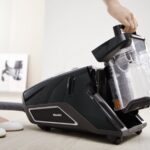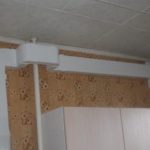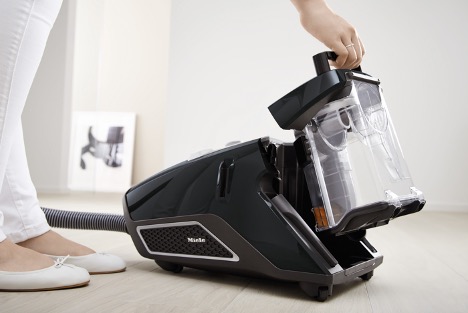What does a pool vacuum cleaner look like? What is it and how does it work?
A pool water vacuum cleaner is a special device that is designed to clean artificial reservoirs of any size and shape. The principle of its operation is associated with the suction of water and its passage through the filter, after which the liquid returns again. How the device works and how to use it correctly is described in this article.
The content of the article
Operating principle and advantages
A water vacuum cleaner, like a regular device, consists of the same elements. This is a housing with a motor, a long handle or hose, and filters. Understanding how a pool vacuum cleaner works is easy.
The user holds the brush and guides it along the surface of the pool, i.e. along the bottom or side wall, steps. The pump pumps out a powerful stream of air, which sucks in the liquid. It goes through the tube and hits the surface of the filter. Here small particles, dust, deposits are cleaned, and the water itself passes further and returns through the hose to the pool.
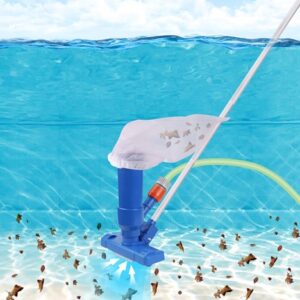
The basic method of vacuuming a pool is practically no different from standard cleaning. But in this case, the pump sucks in water, not air. Moreover, the purified liquid is returned to the pool.
The advantages of such a device are obvious:
- you can quickly clean both small and large artificial reservoirs;
- the maximum cleaning time is 1.5 (for large pools);
- The operating instructions are quite simple, so you can figure out how to use the pool vacuum cleaner in a matter of minutes;
- it is possible to quickly remove plaque and dirt, thanks to which you can change the water much less frequently (this is especially true for reservoirs located outdoors);
- the device works directly in the water, so there is no need to drain it - in fact, the pool does not require preliminary preparation;
- special nozzles allow you to carefully clean the bottom and walls without damage, regardless of the coating material.
There are no disadvantages to a water vacuum cleaner as such, but if you choose the wrong one, for example, a model that is not powerful enough, the cleaning will not be as effective. To prevent this from happening, it is useful to understand how to choose the right model, as well as how to clean the pool with a vacuum cleaner. This is exactly what will be discussed below.
Types of water vacuum cleaners
It is quite clear that the principle of operation of a pool vacuum cleaner is approximately the same as that of a conventional device, with the only difference being that the former operates in an aquatic environment. Moreover, there are several types of such models, which differ in the type of control:
- Manual is the simplest device that is not equipped with its own filter. This model is affordable, but it is suitable only for small bodies of water and with additional equipment (a skimmer or filter device), without which cleaning is impossible.
- The semi-automatic also works with a skimmer, although it may also have its own cleaning device. The engine is powered by electric traction.
- When learning how to choose a vacuum cleaner for a pool, you should also pay attention to automatic devices. They are also called robot vacuum cleaners.Models of this type are more expensive, but at the same time they work completely autonomously, i.e. without additional equipment and even without effort on the part of the users. You can turn on the robot and set a specific program that will be executed automatically. Control is carried out using a remote control.
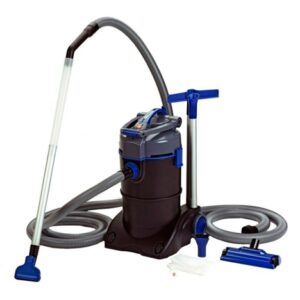
Thus, if the reservoir is small, a manual model will be enough. For example, if we talk about how to choose a vacuum cleaner for a frame pool, there is no point in purchasing expensive semi-automatic devices, much less a robot. If, on the contrary, the area of the artificial reservoir is quite large, and besides, it is located on the street and often gets dirty, it is worth considering automatic vacuum cleaners.
How to use a water vacuum cleaner
It's clear what a pool vacuum cleaner looks like. Now all that remains is to figure out how it works. The instructions are quite simple, but it should be taken into account that even a relatively clean reservoir needs preliminary preparation. The main stages are:
- All people must leave the pool first, as this is a critical safety requirement. All floating and sunken objects, for example, children's toys, watercraft, etc., are also removed. To do this, use a net, which usually comes with the vacuum cleaner.
- After completing the preparation, you need to understand how a water vacuum cleaner works. First, connect the hose, making sure that the fastening is secure. This is very important because otherwise the debris will come out of the pipe and then the whole job will have to start all over again.
- Pull the hose out to the desired depth and immerse it in the pool. If there is a ladder nearby, it is better to secure the hose to it.
- Connect the device and wait until all the air comes out.You need to make sure that water comes out of the hose, because if air gets into the skimmer, the device may break.
- Place the unit plate in the skimmer so as to prevent air from entering.
- Turn on filtration in the main mode, set up the desired program (in the case of a robotic vacuum cleaner).
- Begin cleaning by slowly moving the brush along the bottom. It is better to do this in rows, moving from one edge to the other (opposite on the smaller side). You should not move the brush quickly, because then the debris may rise from the bottom, after which you will need to stop the process and wait for it to settle.
- Upon completion of the entire process, rinse the filter completely and dry the vacuum cleaner, then put it away for storage.
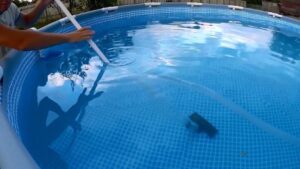
Thus, the principle of operation of a water vacuum cleaner completely coincides with household models used at home. However, since the work takes place in an aquatic environment, it has its own characteristics and safety requirements. You can understand how they work in practice already during the first cleaning.

